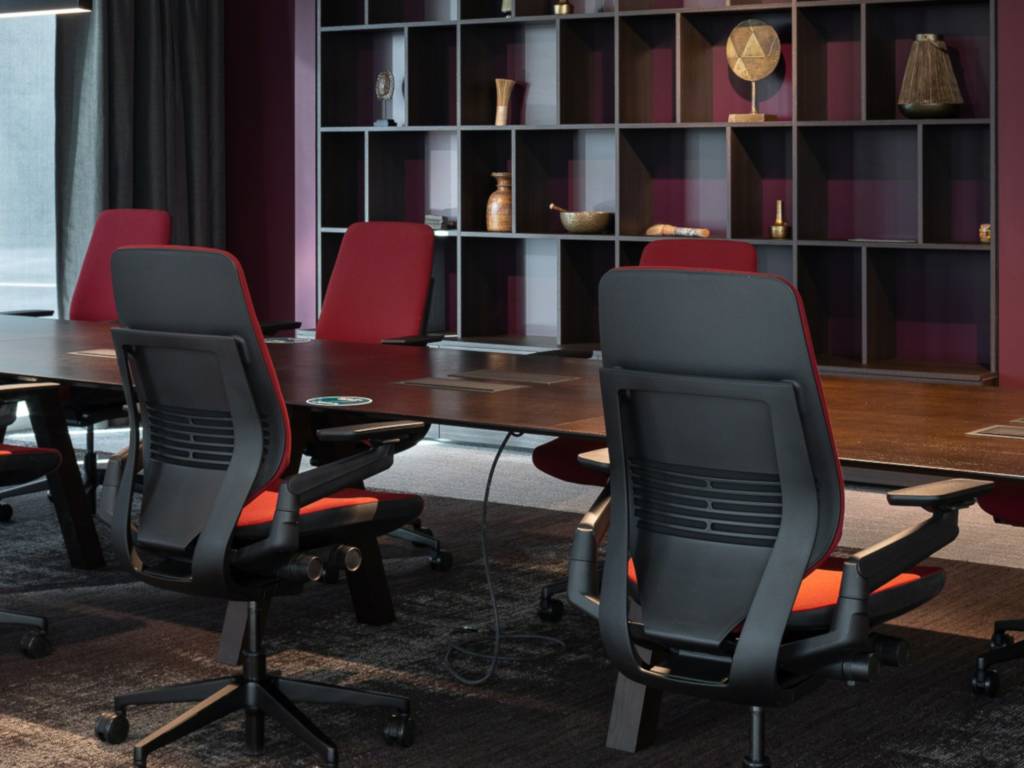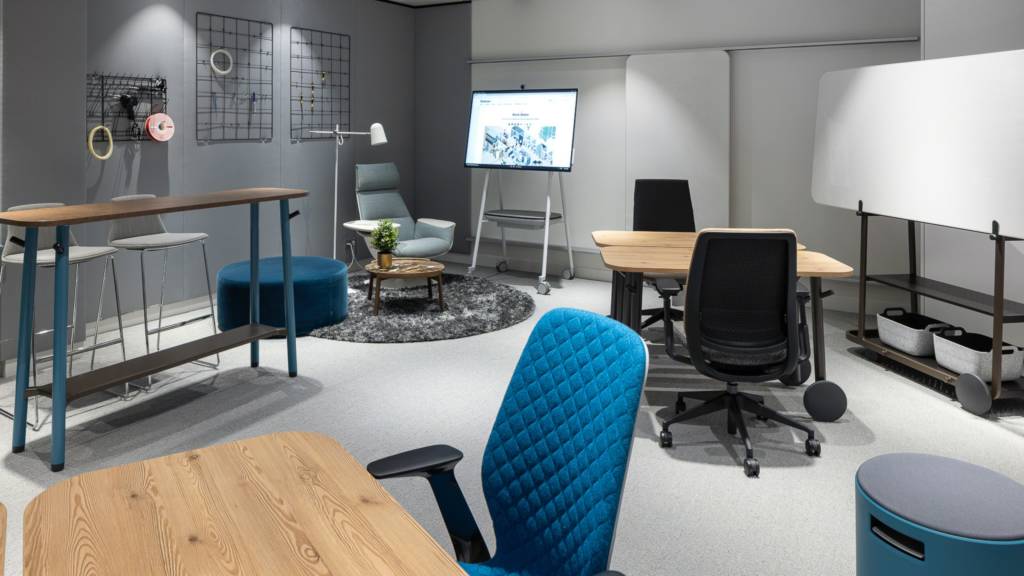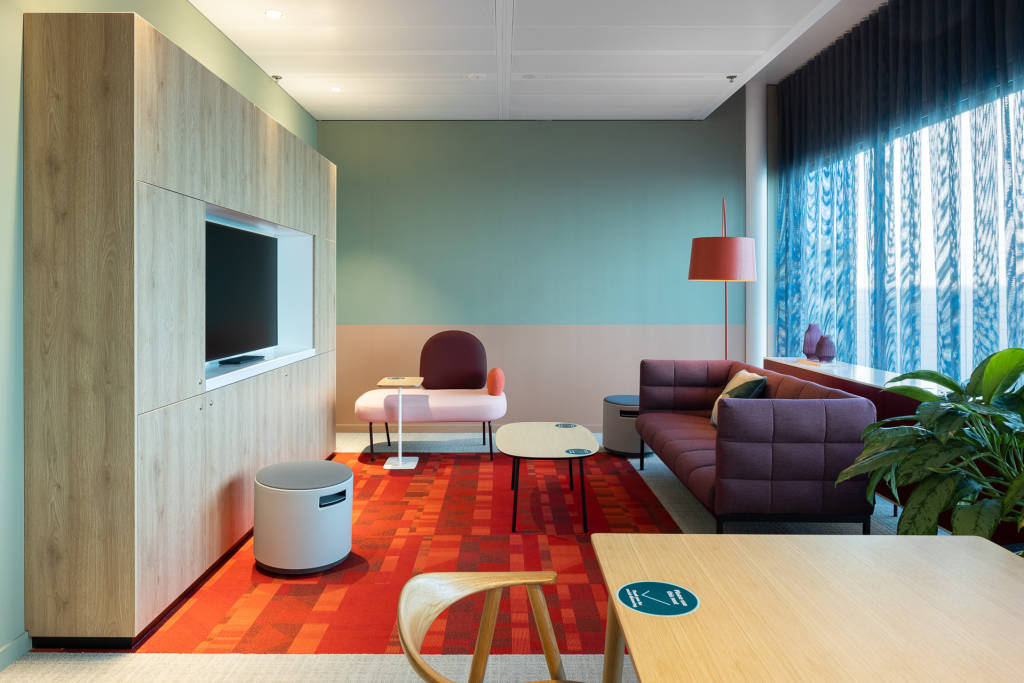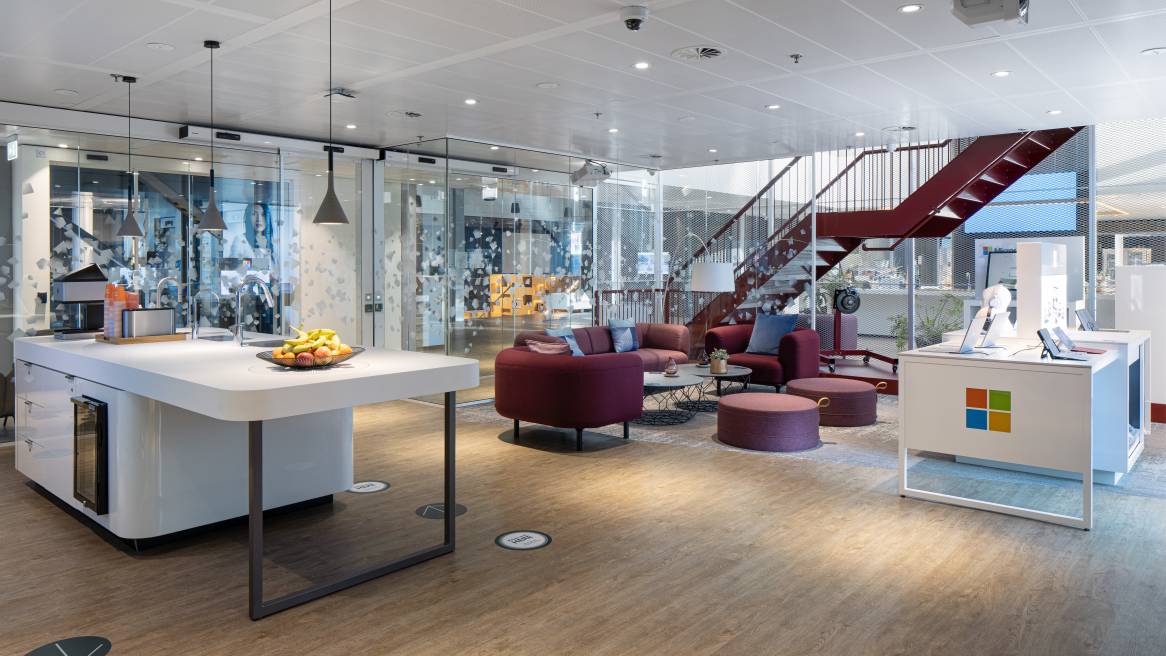Microsoft’s New Hub for a Redefined Business Model
Inside the Industry-Leader’s Customer Hub in Amsterdam
A lot has changed since Microsoft embraced its “New Ways of Working’ model more than a decade ago. The transition to the Cloud facilitated the shift from a linear model based on licenses to one based on an ecosystem of partners and platforms. Collaboration has become even more crucial, and designing a physical workplace to support evolving new work styles is essential.
Inspired by business psychologist and author Tony Crabbe’s book, “Busy: How to Thrive in a World of Too Much,” Microsoft took up the challenge of reimagining its Amsterdam office and designing a space that offers employees and visitors a unique experience where they can touch and feel the essence of what Microsoft is about, regardless of whether they are there in person or virtually.

Today, Microsoft’s new building has become a vibrant hub for collaboration while also paying special attention to individual needs and rituals. According to Joris Haverkort, director of the Microsoft Experience Center, “Digital transformation is what’s driving our conversations with our customers. It is what we all have in common and as Microsoft we want to share how things can be done differently. For example, today you do not just work together with colleagues, but with customers and partners as well. We team up!”
Enabling digital transformation must be addressed through four lenses, says Haverkort:
- Engage your customers
- Empower your employees
- Optimize your operations
- Transform your products

Microsoft Netherlands also identified six local rituals that influenced the space design and now serve as guiding principles for employees on how to interact with each other both in the office and remotely via the right technology:
- Team up: focus on co-creation with partners and customers to maximize impact.
- Be open to everyone, while protecting confidential information.
- Make conscious choices about what needs to be done and with whom within the network; choose the most appropriate location, technology and ritual that can support what needs to be achieved.
- Contribute to the team engagement by being on time, being focused and actively participating in the conversation.
- Respect focus time.
- Allow time to refresh, take breaks, schedule 25 or 45 minute meetings and look after mental health.
The combination of these six rituals is what truly allows the team to make hybrid work successful, says Haverkort.

“Being successful and being able to innovate means we have to look at how we aspire to work, collaborate and refresh,” says Haverkort. “New habits and refreshment of old habits will guide us to work smarter and enhance the creativity and serendipity needed today to add value tomorrow. That is why we wanted to be thoughtful and make conscious decisions on what kinds of spaces we created to support the different activities that would take place here. As a result, the Café functions as a central revolving place, a beating heart around which are located purposeful individual spaces for focus, silence and ‘conscious log off,’ collaboration spaces for teamwork and social spaces for “meet and greets.”
More than 70% of the space is allocated to customers and partners — the remainder to employees. “We envision the entire space as a customer hub with the purpose of showcasing the Microsoft vision. Here we don’t talk about the modern way of work anymore, but rather the way of teamwork, including our external partners in our co-creation process. That’s why solutions like the Steelcase Flex Collection, combined with Microsoft Teams and Microsoft Surface Hub provide for us an appropriate setting for collaboration and innovation to happen,” says Haverkort.

And now, in a post-Covid world?
“The pandemic gave us the confirmation that we got it right,” says Haverkort. “Our employees and visitors can come back as soon as it is allowed, without any major shift to our space. The workplace is and will remain primarily a social destination, able to foster collaboration and co-creation. Maybe for individual and focused work other places will be more suitable, but when it comes to collaboration there is a limit to what one could achieve online. We need to come back to the office.”


